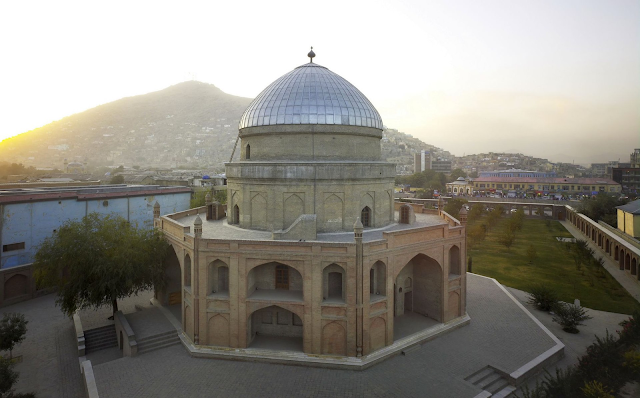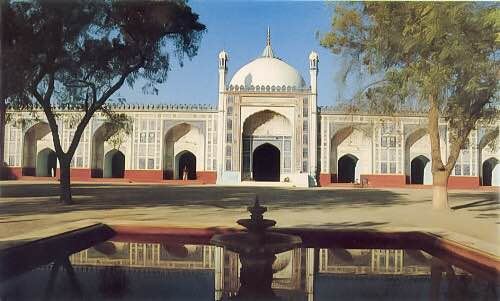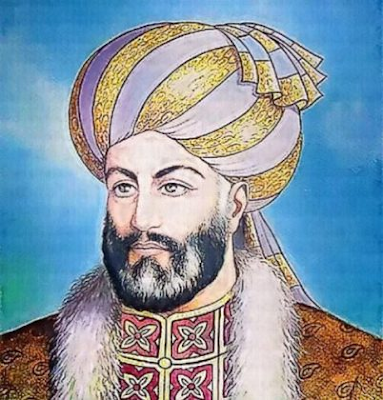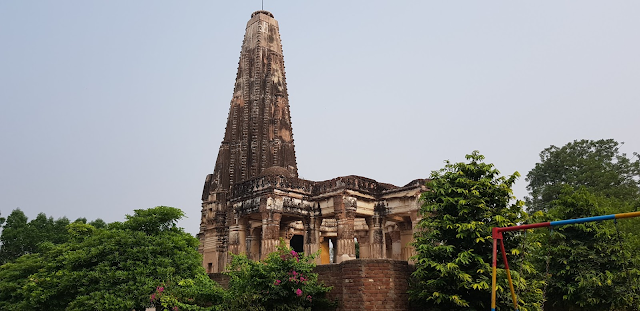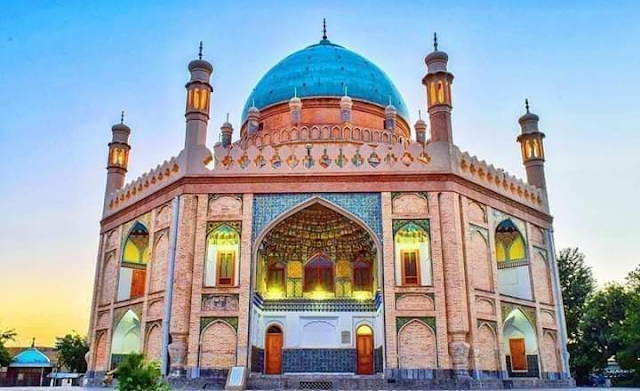Ahmad Shah Abdali was a famous king of Afghanistan in the 18th century. He is considered the founder of modern Afghanistan and for Afghans, he is a national hero. Even in Pakistani mythology, he stands on a high pedestal. Though I am not sure why. After all, we the inhabitants of this region were at the receiving end of his adventures. We even have named a missile after this famous warrior perhaps to instill fear in Indians.
History is interesting to read, but challenging to explain or interpret. Therefore, I shall not focus on the merits or demerits, or achievements of Abdali, as it is a very complex subject, that depends on the perspective from which it is viewed.
Abdali was an Afghan who rose to prominence in the service of Nadir Shah of Iran and accompanied him during his sack of Delhi in 1739. Upon the assassination of Nadir Shah, he looted a portion of his enormous treasure and fled along with his Afghan followers to Kandahar, where he established himself as an independent ruler. The riches he acquired from Nadir Shah's treasure included the famous Koh-i-Noor diamond.
After becoming king, he embarked upon a campaign of consolidation, conquest and plunder. He is most famous for his victory in the third battle of Panipat in 1761. But that was not the only time he invaded India. Mr Hari Ram Gupta in his book "Later Mughal History of the Panjab", mentions ten invasions of Punjab and Northern India, and I would like to share this information with my readers.
The motives behind these invasions are understandable. To consolidate his grip over power, Abdali needed money and prestige, and what better place there could be to achieve these goals than India. It was also important to keep the troublesome chieftains and tribes busy in the business they liked the most. Otherwise, they would fall upon each other or rebel against the king.
Ahmad Shah Abdali. (Picture: https://menonimus.org/ahmad-shah-durrani-brief-biography/)
1. The First Invasion (1747-48)
The Mughals had already lost control over Kabul and Peshawar after the invasion of Nadir Shah in 1739. In 1747 Abdali launched his first invasion of Punjab on the invitation of the governor of Lahore Shahnawaz Khan, who was not on good terms with Delhi. Abdali marched from Peshawar in December 1747 and reached Shalamar Garden on 10th January 1748. In the meantime, Shahnawaz Khan changed his mind and refused to cooperate with Abdali. The matters were sorted out the next day on the battlefield. Shahnawaz was defeated and fled to Delhi. Abdali captured the city without any further resistance and plundered the suburbs of the city, particularly Mughalpura. The city itself was spared upon payment of 3 million rupees.
Aging, indolent and feeble Mughal Emperor Muhammad Shah finally rose from his stupor and sent a huge army northward to confront Abdali. After some manoeuvering the two armies met at Manupur, about 16 km northwest of Sirhind, on 11th March 1748. The result was in favour of the Mughals and Abdali had to retreat. However, the Mughals did not take full advantage of this victory and did not pursue him. Thus Abdali's first adventure ended in failure.
Aam Khas Bagh Sirhind. Photo by Wikipedia
2. The Second Invasion (1749-50)
Abdali was keen to retrieve his honour and crossed the Indus in December 1749. He knew the chaotic conditions in the Mughal darbar and was determined to take full advantage. Muin ul Mulk was the governor of Lahore at that time and he marched to meet the invader. He encamped at Sodhra, 5km east of Wazirabad. While Abdali was staying at Kopra, 7 km further eastward. Negotiations started between the two camps. Abdali demanded the revenues of four Mahals, Gujrat, Aurangabad, Pasrur and Sialkot. The emperor Ahmad Shah Bahadur thought it prudent to accept the demands of Abdali, instead of fighting. Abdali, thus satisfied, returned to Afghanistan.
Shivala Temple, Sialkot. (24.07.2019.) Photo by the Writer
3. The Third Invasion (1751-52)
The weakness shown by Ahmad Shah Bahadur was an open invitation for further aggression. Excuse for this invasion was readily found when the revenue, of the aforementioned four Mahals, was not paid in time. He sent his emissary to demand the revenue due to him. The governor, Muin ul Mulk, expressed his inability to pay the full amount but sent him Rs 9 lalkhs and promised to pay the rest. However, Abdali was not satisfied and continued his march on Lahore. He laid siege to the city and after a prolonged struggle, lasting for several months, Muin ul Mulk, or Mir Mannu, as he is famous in history, surrendered to Abdali on 6th March. He had no other option as he did not receive any help or reinforcements from Ahmad Shah Bahadur the Mughal emperor in Delhi. Though he fought valiantly and Abdali was impressed by his bravery. In the end, a treaty was concluded between the two monarchs and Punjab, including Multan, was ceded to Abdali's empire and Abdali appointed Muin ul Mulk as his own governor at Lahore.
It was a hard, bitter campaign. The city was plundered and large areas around the city were devastated. During the siege of Lahore, an army of Abdali easily conquered Kashmir and this beautiful valley was permanently lost by the Mughals.
Lahore Fort. Photo by Wikipedia
4. The Fourth Invasion (1756-57)
The governor of Lahore Moin ul Mulk died in 1753 and his wife Mughlani Begum took control of the government of Punjab. However, she herself was deposed and made captive in 1756 by the Wazir Imad ul Mulk, who appointed Adina Beg as the new governor. To settle the score with her opponents, she invited Abdali to invade India, promising to secure him crores of rupees from Delhi. This was an opportunity that Abdali could hardly miss.
Abdali marched from Kandahar and reached Lahore on 20th December 1756. At this point, the Mughal Empire had been reduced to the lowest depth of wretchedness and Abdali entered Delhi on 28th January, 1757, without any resistance.
What happened next is narrated in Siyar Al Mutakhreen, by Ghulam Hussain Khan Tabatabai:
"From that day his troops commenced plundering and sacking the city mercilessly, and they kept on dragging away people's wives and daughters so cruelly that a large number of them overborne by the delicacy of their feelings preferred to commit suicide and God only knows the number and nature of all other violence committed in that unfortunate city."
Abdali employed all kinds of threats, torture and devious means to extort money from the highest officials of Delhi Darbar or the rich traders of the city. From Delhi, Abdali marched southward and captured the fort of Ballabgarh. From this city expeditions were sent in all directions to loot, plunder, indiscriminate killings and rape women. Holy cities of Hindus, Mathura and Brindaban were devasted and plundered by Jahan Khan, the commander in chief of Abdali. The same treatment was meted out to Agra, where two thousand people were massacred.
These depredations only stopped when cholera broke out in Abdali's camp and hundreds of soldiers started dying daily, he was forced to return to Delhi. On his return, Delhi was again looted. Earlier Abdali had married his son Timur Shah to the daughter of Emperor Alamgir II. Now he himself forcibly married Hazrat Begum, a 16 years old daughter of the late Emperor Muhammad Shah. Soon Abdali returned to Afghanistan with his enormous booty loaded on 28,000 camels, horses, mules, bullock carts and elephants.
He appointed his eleven years old son Timur Shah the governor of Lahore, under the supervision of his general Jahan Khan and also annexed the province of Sirhind. However, by this time it was not easy to rule Punjab. Sikhs were in rebellion and taking full advantage of the chaotic conditions in Punjab and other centres of power like Adina Beg, the governor of Jalandhar Doab, were also in no mood to cooperate with the Afghans. As a result, the Afghan control over Punjab was weak and precarious.
Red Fort, Delhi. Photo by Wikipedia
5. The Fifth Invasion (1759-61)
The fifth invasion of Abdali proved to be the most famous. The Afghans, as we have noted above, were unable to govern Punjab effectively. Adina Beg to further his interests invited Marathas, who were in control of Delhi, to invade and occupy Punjab. On the approach of Marathas Jahan Khan fled from Lahore on 9th April 1758 and Marathas chased him up to Attock. They remained in occupation of that strategic point for four months.
Earlier in August 1757, Delhi was also lost to Marathas and Najib ud Daula, the de facto ruler of Delhi and a close ally of Abdali had to flee the city. Now the emperor Almagir II was the puppet of Marathas. At this point, both Najib and Alamgir appealed to Abdali to help them against the Marathas. Abdali could not ignore the rising tide of Marathas and decided to come to the rescue of his allies in India and wrest control of Punjab from the Marathas.
He reached Lahore in October 1759. The next year passed in a lengthy campaign and several battles in the vast plains of North India and finally Abdali and his allies and Marathas met in the historic battlefield of Panipat on the 13th of January 1761. The Marathas suffered a crushing defeat and lost their supremacy in North India for many years. On the other side, this was the greatest victory of Abdali in his entire military career. He stayed with his army in Delhi for the next two months and returned to Afghanistan on 22nd March 1761.
The War Memrorial at Panipat. Photo by tribuneindia.com
6. The Sixth Invasion (1762)
On his return journey after the battle of Panipat, the army of Ahmad Shah was greatly harassed by the Sikhs. Who constantly attacked, killed, and looted the Afghans, laden with enormous booty. From this point onward the Mughals were totally out of Punjab and now the contest to control Punjab was between the Sikhs and the Afghans only.
By this time the Sikhs were the most dominant power in Punjab and as soon as Abdali was out of Punjab, the Afghans started losing control over vast areas. The Sikhs became so bold and powerful that they defeated and killed Khwaja Obaid the governor of Lahore and occupied the city in early 1962.
Ahmad Shah was understandably incensed and marched to chastise Sikhs. They evacuated most of the territory and gathered at Kup a village 22 miles south of Ludhiana. They were roughly about 50,000 in number. They were surprised by Abdali on 5th February 1762 and lost thousands of men in a long-running battle. After chastising the Sikhs, Abdali returned to Lahore. But on his way to Lahore, he destroyed the most sacred gurdwara of the Sikhs at Amritsar, known as Darbar Sahib.
Abdali remained in Punjab until December 1762 in Lahore. But failed to restore order and peace in Punjab and control the guerilla activities of the Sikhs and their loot and plunder.
Battle of Kup, Memorial.
Wadda Ghallughara kup rohira 2020 in , photos, Fair,Festival when is Wadda Ghallughara kup rohira 2020 - HelloTravel7. The Seventh Invasion (1764-65)
After the departure of Abdali after the previous campaign, the field was open for the Sikhs. They spread their reign of terror and plunder to the whole of Punjab, even beyond. In the east, they crossed Jamuna and caused great disturbance in Rohilkhand. In the west, even the mighty Rohtas Fort fell to them and in the south they plundered Multan. Besides looting towns and cities they destroyed and desecrated mosques and forbade Muslims to perform their religious obligations. Afghan faujdars either fled in the face of the Sikhs or were killed and complete anarchy prevailed in Punjab at this time.
Abdali could not ignore this challenge to his authority and prestige for long. He entered Punjab in the winter of 1764-65 to crush the Sikh jathas. However, despite his best efforts and many inconclusive engagements, he could not break the power and resistance of the elusive Sikhs. However, once again he satisfied himself by destroying the gurdwara at Amritsar. ٖAfter staying in Lahore for some time, Abdali marched toward Ambala with the intention to go to Delhi. During this journey, he vent his fury on the local population and thoroughly plundered the whole region on both sides of Beas and Jalandhar Doab. However, after teaching Jamuna River he changed his mind and returned to Punjab. Again some fierce clashes erupted between the two sides on a daily basis during his passage through Jalandhar Doab, but no decisive battle was fought. Abdali had realized by this time that any further stay in Punjab was futile and returned to Afghanistan, without wasting any time. This seventh campaign of Abdali proved to be a total failure and he did not achieve any of his aims. He left Punjab in April 1765.

Rohtas Fort. 16.01.2022. (Photo by the writer)
8. The Eighth Invasion (1766-67)
Ahmad Shah Abdali had left Punjab in April 1765, and only a month later the Sikhs expelled his Viceroy from Lahore and struck their own coin. Abdali was not yet ready to give up such a valuable province of his empire as Punjab. He returned the next year and crossed Indus at Attock in December 1766. Sikhs tried to oppose him twice on both sides of the river Jhelum but failed. Abdali entered Lahore on 22nd December 1765, unopposed, and soon Amritsar too fell to his general. The Sikh sardars dispersed to different parts of Punjab. Now the great chases began. The Sikh bands resorted to their favourite tactics of guerilla warfare, i.e. hit and run, attacking baggage trains, and harassment. Many skirmishes and running battles were fought but no decisive action took place. By now, Abdali was fully realizing that he cannot subdue the Sikhs. He tried to reach to a settlement with them but received no positive response. Even during his presence Sikhs were active throughout Punjab and even entered Doab of Ganga Jamuna and attacked the territories of Abdali's allies.
Abdali marched as far as Ismailabad, 20 miles south of Ambala. He did not go any further and for some time encamped at Machhiwara, near Sutlej. He sent several expeditions against the Sikhs but without any success. However, one of his generals Jahan Khan was able to inflict a crushing defeat on the bands of the Sikhs busy in their depredations in Gangetic Doab, near Shamli. Abdali did not stay for long in Punjab and returned to Afghanistan. This expedition proved to be a total failure.
9. The Ninth Invasion (1768-69)
This expedition was very short and without any significance. He entered Punjab in December 1768. He came as far as the Chenab, while the advance guard arrived at Eminabad. But on this occasion, his fortuned were at their lowest ebb. His health was failing, and his prestige waning. Internal disturbances in Afghanistan were also adding to his worried. So due to many factors, he was compelled to return in January 1769.
An old Lodhi era mosque at Eminabad. 23.07.2019. (Photo by the writer)
10. The Tenth Invasion (1769-70)
This last expedition of Abdali to achieve wealth and glory and divert the attention of his troublesome people to foreign adventures proved to be the most miserable. This time he could not move beyond Peshawar and after staying there for a short time, returned to Kandahar.
Thus ended an epoch in the history of Punjab, that left deep imprints on the history and minds of the people of Punjab. The Sikhs were most directly effected but at the same time were the greatest beneficiaries. It is interesting to note that Abdali first came to India in 1739, when he accompanied his mentor Nadir Shah. It is also noteworthy, that these invasions did not end with the death of Abdali in 1772 and continued almost to the end of the eighteenth century by his predecessors. That would be the topic of my next article.
Tomb of Ahmad Shah Abdali, Kandahar. (Photo by: Wikipedia)
I would appreciate your suggestions for improving this post or pointing out any mistakes.
Tariq Amir
July 17, 2023.
Islamabad
